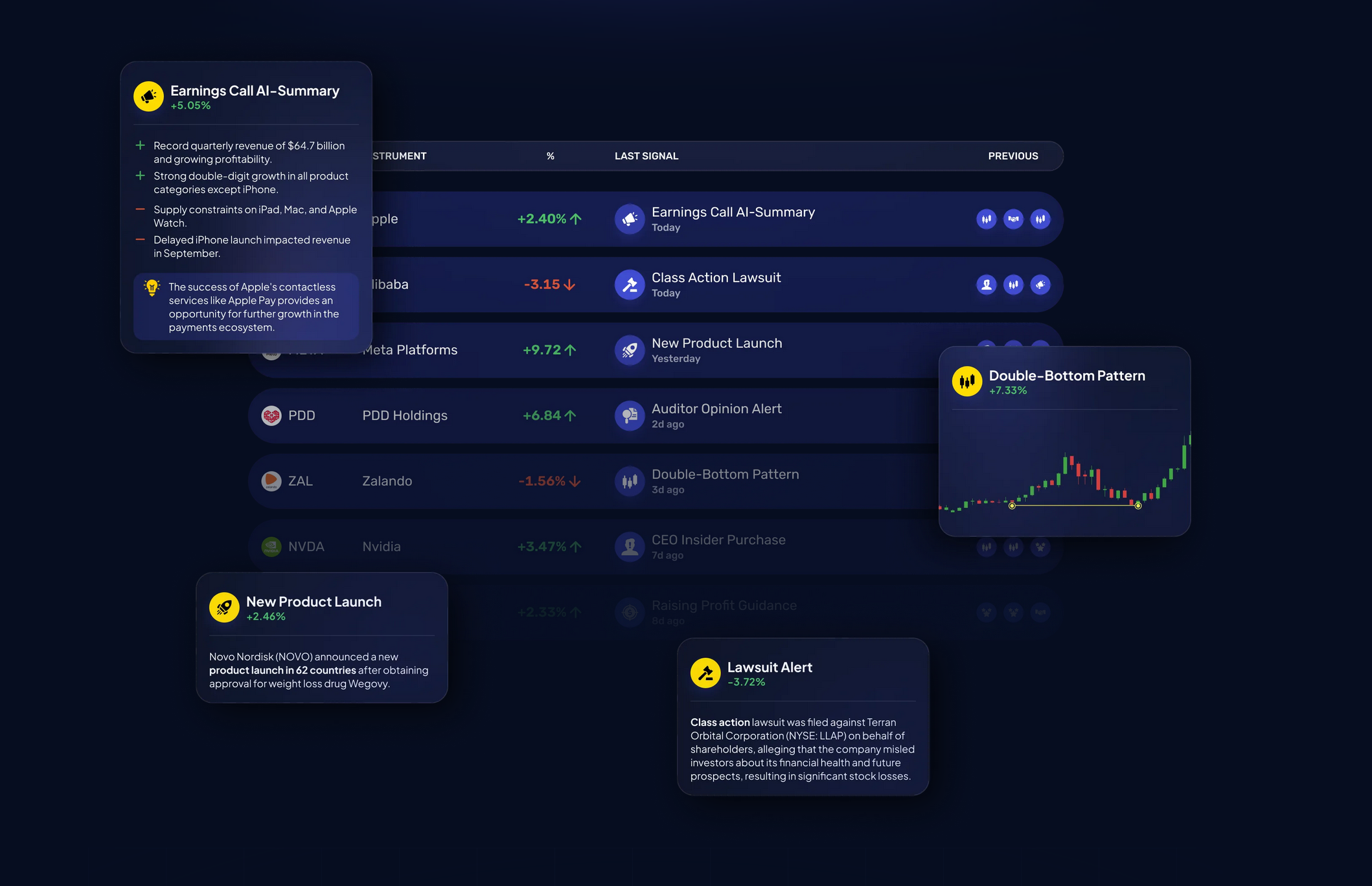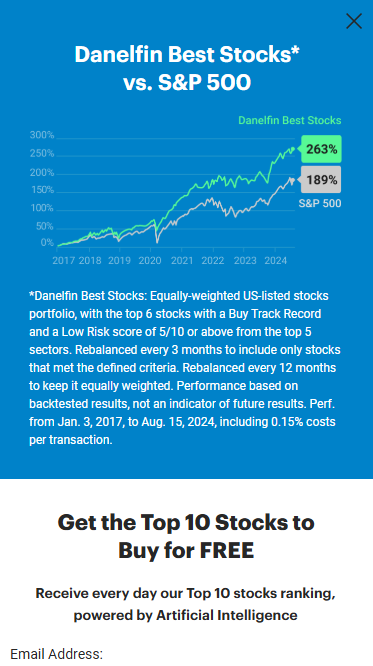20 Pro Advice On Deciding On AI Stock Predictions Analysis Websites
Wiki Article
Top 10 Suggestions On How To Assess The Strategy Customization Of Ai Trading Platforms
The ability to customize strategies is an essential characteristic of AI platform for predicting and analyzing stocks, as it allows users to tailor the platform to their own specific goals in trading, risk tolerance, and market conditions. Platforms that have powerful customization capabilities can improve your trading efficiency. Here are 10 top strategies for evaluating the customizable options available on these platforms.
1. Evaluate Pre-Built Strategy Templates
Many templates - Look for built-in strategies that are designed to accommodate various trading styles.
Easy of use: Evaluate how easily you can modify and use these templates according to your needs.
Performance history: Verify that the platform is able to provide previous data on performance that can be used to create pre-built strategic plans.
2. Assess Customized Strategy Creation
Drag-and-drop: Search for platforms that offer drag-and-drop interfaces to create custom strategies.
Coding options: Determine whether the platform supports custom programming (e.g., Python, R, or proprietary scripting languages) for advanced users.
Flexibility: Make sure the platform permits you to establish entry and exit rules as well as risk management parameters and other key components of your strategy.
3. Check for Backtesting Capabilities
Historical data: Verify that the platform has enough historical data for back-testing strategies.
Modifiable parameters: Make sure you can adjust parameters (e.g. timeframes, timeframes, indicators) when backtesting.
Performance metrics - Check to see if your software offers detailed performance indicators (e.g. the win rate, Sharpe coefficient or drawdown) for all strategies that have been backtested.
4. Evaluate Real-Time Strategy Testing
Paper trading Strategies can be tested in real-time with simulation or paper trading.
Live testing is an excellent way to check whether your strategy is able to be implemented in the real world market using very little.
Real-time adjustments: Examine to see if your strategy can be adjusted in real-time according to the market conditions.
5. Examine the Integration using technical indicators
Indicator Library: Verify whether the platform is equipped with a library of technical indicator (e.g. moving averages, RSI or MACD).
Custom indicators. Ensure that you are able to develop or utilize custom indicators to your plan.
Check the combination of indicators.
6. Check for Risk Management Tools
Stop-loss/take-profit: Ensure the platform allows you to set stop-loss and take-profit levels within your strategies.
Position sizing. Check whether you have established rules for the best way to handle the risk (e.g. an amount that is set per portfolio, percentage).
Risk-reward: Make sure your platform permits you to define risk-rewards for each trade or strategy.
7. Evaluate Multi-Asset Strategy Support
Asset classes: Make sure your platform is able to support various asset classes such as stocks, ETFs and options.
Cross-asset strategies: Determine if you are able to develop strategies that incorporate various types of assets (e.g. pairs trading and Hedging).
Market coverage. Verify whether the platform covers the markets that you're looking to invest in (e.g. US international, copyright).
8. Evaluate Automation and Execution
Automated trading: Ensure that the platform allows automated execution of strategies using predefined rules.
Types of orders: Check to see if your platform permits different order types (e.g. limit or market) when executing a strategy.
Latency: Determine if the platform can execute trades with minimal latency, particularly when using high-frequency strategies.
9. Look for strategies optimization tools
Parameter optimization: Make sure the platform has tools to optimize the parameters of your strategy (e.g. grid search or genetic algorithm).
Machine learning integration Check to see whether your platform is compatible with machine learning capabilities to enhance and improve strategies.
Scenario Analysis: Find out whether the platform can test strategies in different markets (e.g. bull bear, bear or volatile).
Review User Comments
Feedback from users Conduct research on users to determine the efficacy of the platform for creating a custom strategies.
Community forums - Look to see if the platform has a community that is active and where members can share their own strategies.
Support resources: Ensure that the platform provides tutorials, webinars or documentation which will assist users in developing and improve their strategies.
Bonus Tips
Trial period: Use the demo or trial version for free to test the platform's strategy and customization capabilities.
Scalability - Ensure the platform you select can adapt to your changing trading strategies.
Customer Support: Ensure that the platform provides assistance for any concerns related to strategy or questions.
With these suggestions, you can assess the capability of AI platforms for analyzing and predicting stocks to customize strategy. This will enable you to choose a trading platform that aligns with your goals in trading and lets you develop and refine strategies. Platforms that are flexible in their customization capabilities will allow you to adapt to the changing market conditions and enhance your trading performance. Check out the top ai for investing for more info including ai for trading, trading with ai, ai trading, ai trade, ai stock, ai investing, ai trading tools, trading ai, ai trading, ai stock and more.

Top 10 Ways To Evaluate The Accuracy And Scalability Of Ai-Based Stock Trading Platforms
Scalability is a crucial aspect in determining if AI-driven platforms that predict stock prices and trading can handle the increasing demand of users, markets and data volumes. Here are the top 10 suggestions to assess scalability:
1. Evaluate Data Handling Capacity
Tip: Verify that the platform has the capacity to process and analyse large databases.
Why? Scalable systems have to handle data volumes that are increasing without affecting performance.
2. Test the capabilities of a Real-Time Processor
Find out how your platform can handle streaming data in real time including live stock quotes, or breaking news.
Why: Delays in trading decisions can result in missed opportunities.
3. Cloud Infrastructure Elasticity and Check
Tip. Find out if the platform is using cloud-based infrastructure, such as AWS, Google Cloud and Azure which are able to expand resources according to demand.
Cloud platforms are able to allow for elasticity. The system can be scaled up or reverse in accordance with the need.
4. Examine Algorithm Efficiency
Tips: Examine the computational effectiveness and accuracy of AI models for predictions.
Why? Complex algorithms can be resource-intensive. Optimizing them to allow them to scale is crucial.
5. Explore the possibilities of Parallel Processing and Distributed computing
Find out if the platform uses parallel computing or distributed computing frameworks.
What are they: These technologies facilitate more efficient data processing and analytics across multiple nodes.
Examine API Integration & Interoperability
TIP : Make sure the platform can integrate with other APIs, like market data providers and brokerage APIs.
Why? The platform is able to adapt to changes in data sources and trading environments because of seamless integration.
7. Analyze User Load Handling
Utilize a high-traffic simulator to test how the platform reacts under pressure.
Why: A scalable platform should maintain performance even when the number of users increase.
8. Examine the model's retraining capabilities and the model's adaptability
Tip - Assess how frequently the AI model is trained and with what efficiency.
Why is this? Markets are always shifting, and models must to be able to change quickly to remain precise.
9. Check Fault Tolerance (Fault Tolerance) and Redundancy
Tips - Ensure that your platform is equipped with failover and redundancy mechanisms to handle hardware or software issues.
The reason: Trading can be expensive So the ability to handle faults and scale are vital.
10. Monitor Cost Efficiency
Tip: Evaluate the cost of scaling the platform, including cloud resources, data storage, and computational power.
The reason is that it should be at a cost that is sustainable. This means balancing the performance against the cost.
Bonus Tip: Future-Proofing
Assuring that the platform will be able to accommodate emerging technology (e.g. advanced NLP quantum computing, quantum computing) and changes in regulatory requirements.
These elements will help you evaluate the impact of AI-powered stock prediction as well as trading platforms. They will also ensure they're reliable, efficient, ready for expansion, and are future-proof. Take a look at the most popular these details about free ai tool for stock market india for more advice including can ai predict stock market, ai for trading stocks, ai in stock market, ai trading tool, stocks ai, stock predictor, stocks ai, chart analysis ai, ai stock prediction, ai in stock market and more.
